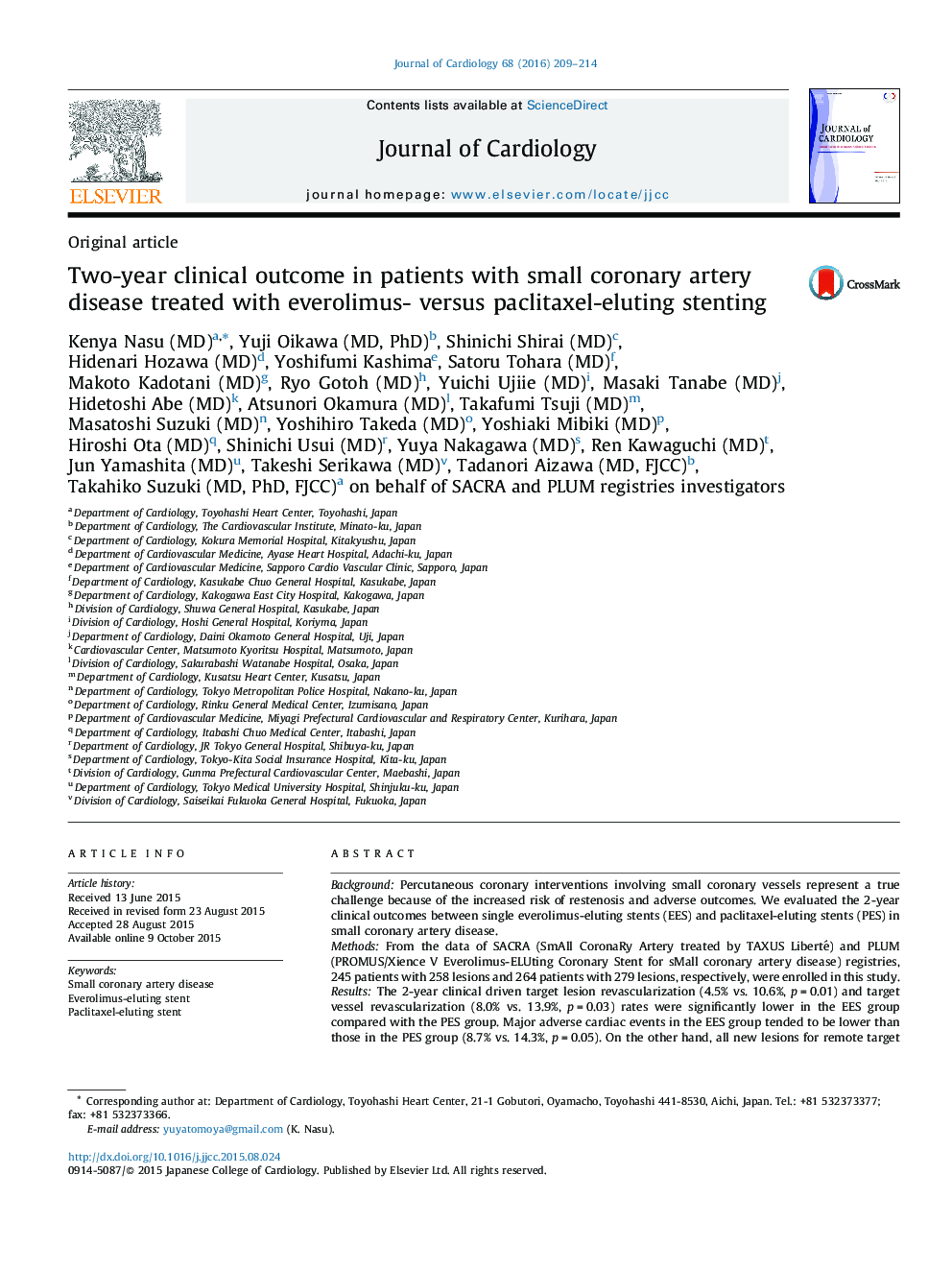| Article ID | Journal | Published Year | Pages | File Type |
|---|---|---|---|---|
| 2962769 | Journal of Cardiology | 2016 | 6 Pages |
BackgroundPercutaneous coronary interventions involving small coronary vessels represent a true challenge because of the increased risk of restenosis and adverse outcomes. We evaluated the 2-year clinical outcomes between single everolimus-eluting stents (EES) and paclitaxel-eluting stents (PES) in small coronary artery disease.MethodsFrom the data of SACRA (SmAll CoronaRy Artery treated by TAXUS Liberté) and PLUM (PROMUS/Xience V Everolimus-ELUting Coronary Stent for sMall coronary artery disease) registries, 245 patients with 258 lesions and 264 patients with 279 lesions, respectively, were enrolled in this study.ResultsThe 2-year clinical driven target lesion revascularization (4.5% vs. 10.6%, p = 0.01) and target vessel revascularization (8.0% vs. 13.9%, p = 0.03) rates were significantly lower in the EES group compared with the PES group. Major adverse cardiac events in the EES group tended to be lower than those in the PES group (8.7% vs. 14.3%, p = 0.05). On the other hand, all new lesions for remote target vessel revascularization were observed at the proximal site of target lesions in both groups and those rates were not different between the two groups (3.4% vs. 3.3%, p > 0.99).ConclusionEES showed better clinical results at 2-year follow-up compared with PES in small coronary artery diseases, however, new lesions at the proximal remote site of the target lesion remain problematic.
